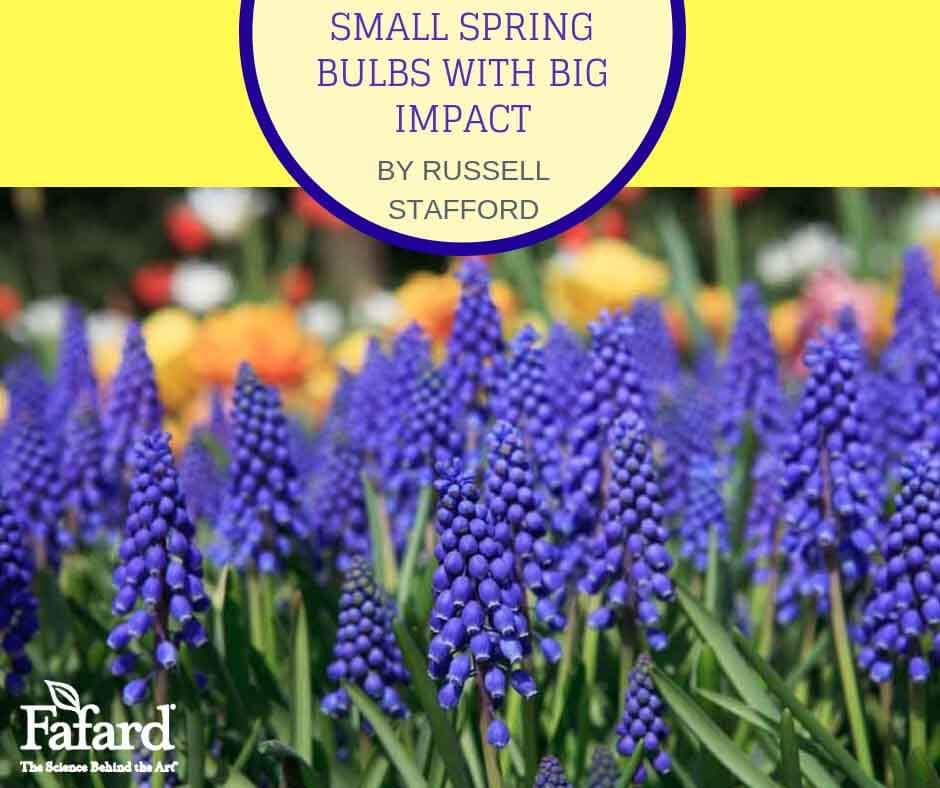

When planting bulbs in fall, plant small. “Minor” bulbs can have a major impact in the spring garden. Individually, they may not measure up to bulbous divas such as Darwin tulips and large-cupped daffodils. But combine a few divas with a chorus of lesser companions, and the real magic happens. Why have a quartet when you can have the finale of Beethoven’s Ninth?
Here are five of the best “minor” bulbs for deploying in expansive, dramatic (and pest-resistant) drifts. Most are inexpensive, costing but a few pennies apiece in bulk. Additionally, many of them self-sow, proliferating into ever-expanding sweeps. They’re also a breeze to plant in fall. Stab a hole, stuff a bulb, and repeat a few hundred times (or more). You’ll be rewarded with a lavish display for many springs to come. Amend excessively heavy or sandy soil by digging in 2 to 4 inches of Fafard compost before planting and add fertilizer formulated for bulbs.
Winter Aconite (Eranthis hyemalis)
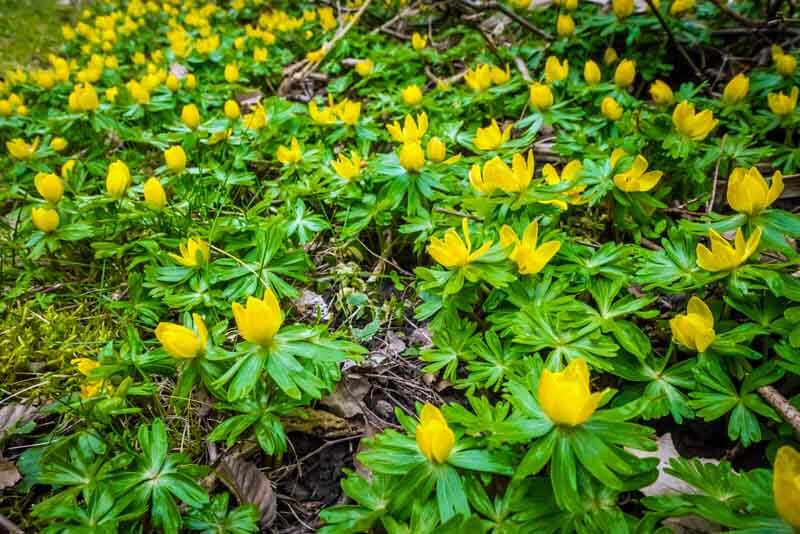
The glossy yellow buttercups of this Eurasian woodlander open during the first mild days of late winter, much to the delight of awakening honeybees. The flowers are framed by collars of deeply lobed, rich-green, leaf-like bracts. Plants enter dormancy soon after blooming, dying back to knobbly underground tubers. Winter aconites that are sold in bulk by stores and catalogs are often dead from desiccation, so it pays to look for a retailer who deals in smaller quantities of properly stored tubers. Even better is to collect and sow fresh seed soon after it ripens in early to mid-spring. A friend with a colony of Eranthis hyemalis is an invaluable resource.
Snow Crocus (Crocus tommasinianus)
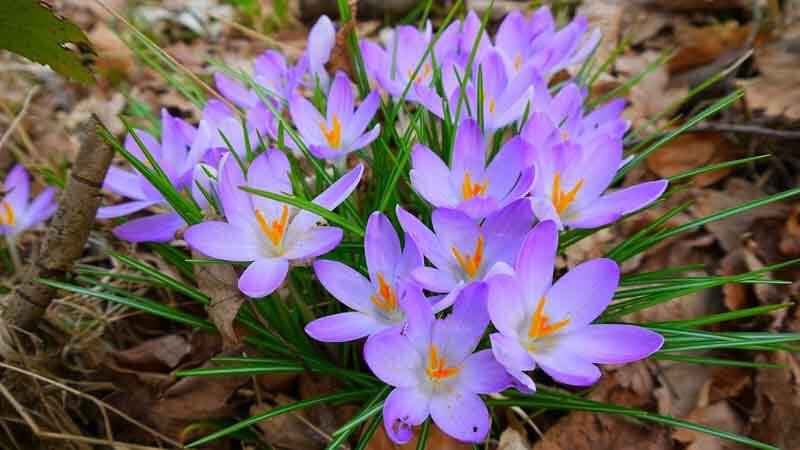
“Tommies” may not be the largest crocuses, but they amply compensate by being among the earliest and most prolific. They’re also some of the toughest and most adaptable, thriving in most soils in full or partial sun, and often escaping the ravages of squirrels (which have a fatal attraction to most other crocuses). The silvery-lavender flowers debut in late winter or earliest spring, continuing for several weeks. White-, pink-, and purple-flowered cultivars are also available. Whatever the color, they usually spawn seedlings, with cultivars often sowing true to type. If you’re looking for a crocus to naturalize in a woodland edge or border or lawn, this is the ideal candidate.
Siberian Squill (Scilla siberica)
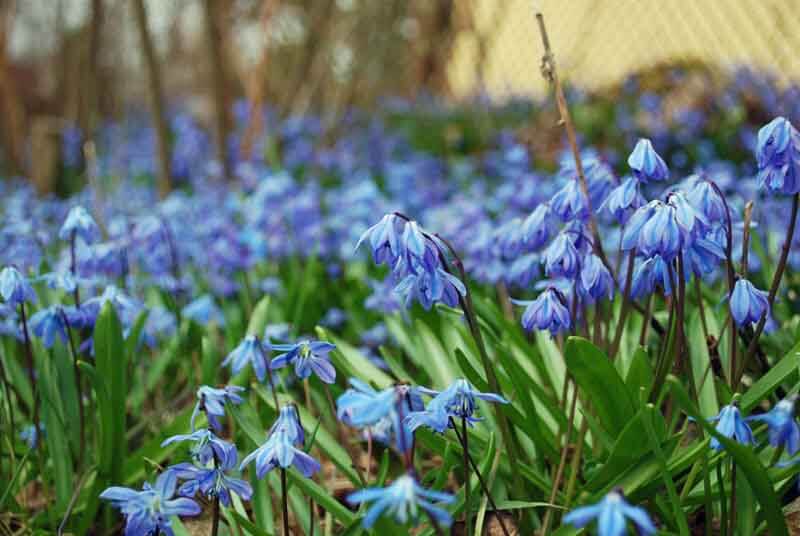
No bulb is better for creating pools of blue in the early spring garden. A sweep of Siberian squill is the perfect thing for complementing the luscious waterlily blooms of saucer magnolia, or for carpeting a lawn, or for interplanting with early daffodils and tulips. Borne in small clusters atop 4-inch-tall stems, the nodding, cup-shaped blooms are typically sky-blue with darker mid-ribs, although other color forms sometimes occur (including white-flowered ‘Alba’). Siberian squill takes readily to most sunny to partly shaded garden habitats, self-sowing where happy.
Glory-of-the-Snow (Chionodoxa spp.)
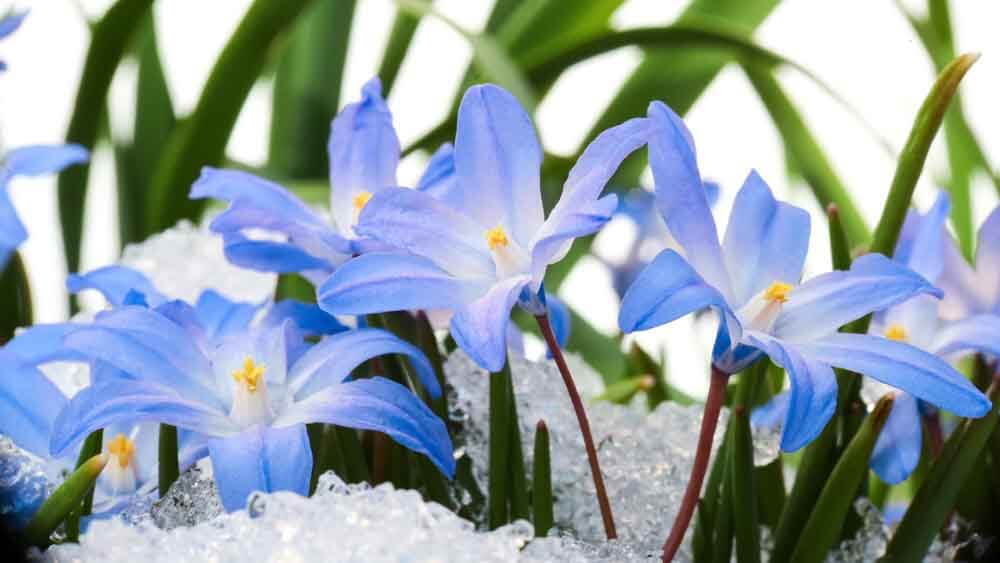
Close relatives of Siberian squill, these little bulbs are also similar in ornamental effect and bloom time, producing clusters of starry, bright blue, white-eyed flowers that face skyward in early spring. Color variants include pink, purple, and white. Most Chionodoxa are happiest in sun but will tolerate some shade. Many varieties self-sow, and some will partner with nearby Siberian squills to produce hybrid seedlings.
Grape Hyacinths (Muscari spp.)
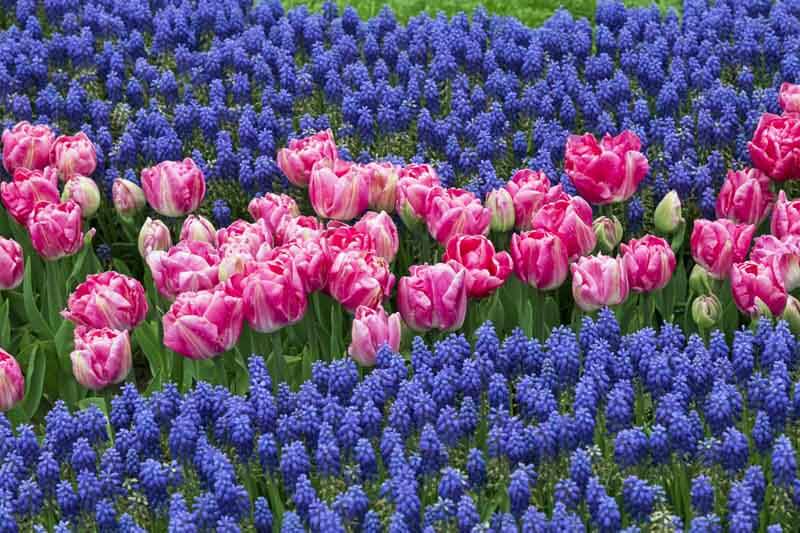
We highlighted this delightful genus of little bulbs in our March edition (Click here to read the full article.), but it bears repeating: grape hyacinths are among the best foils for tulips, daffodils, bleeding hearts (Dicentra spp.), perennial candytuft (Iberis spp.), and just about anything else that flowers in early to mid-spring. Tight conical flower clusters that resemble bunches of miniature grapes are borne atop 4- to 6-inch stems in all shades of blue (depending on the variety), as well as white and pink. The most commonly offered species – Muscari armeniacum – is an enthusiastic naturalizer, self-sowing abundantly in sunny, well-drained sites. Most bulbs sold under the names Muscari aucheri and Muscari botryoides (many of which are actually forms of Muscari armeniacum) are equally attractive and prolific.
Invest a modest amount of time and money in fall, and you can have a symphony of color early next spring.
